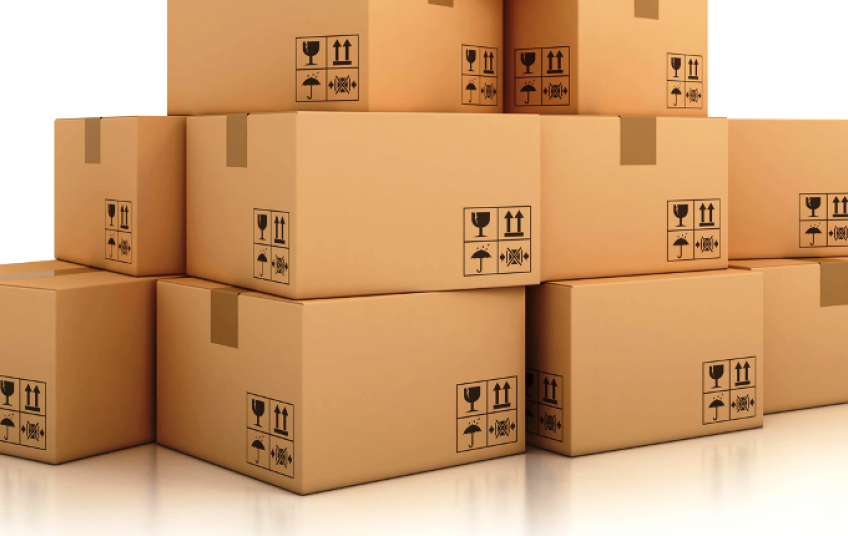There are many different types of materials used in the packaging industry worldwide. Each material has its own purpose and advantages that help meet a company’s packaging goals. A packaging company’s priority is obviously to make sure the package reaches the intended destination with no damage and that the consumer is fully satisfied. Each type of package is handled differently. Thus, different approaches must be taken to ensure that a package meets a company’s goals. Packaging a product that will be shipped by a truck is different than packaging a product that will be shipped by a plane. There are many types of materials in the packaging industry because not one material is perfect and universal for all types of packaging.
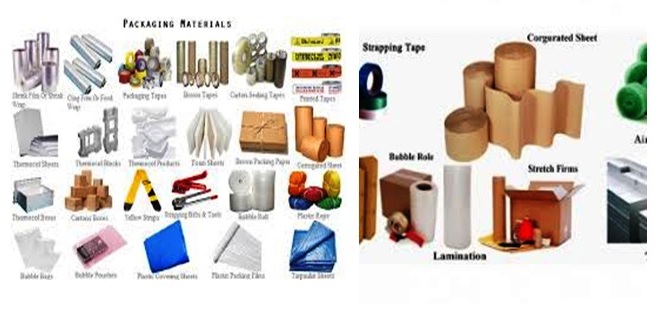
Glass has a huge market in the packaging industry. Glass is a preferred method for some companies as it is 100 percent recyclable and often reusable. According to PackagingBlog, “glass can be recycled endlessly without loss in quality or purity”. Glass can also be used to package items to give the contents of the package a “premium” look, making them more appealing to consumers. Glass packaging allows food and beverages to stay fresh for a longer time period compared to commonly used plastics. As an example, beer is commonly stored in dark glass bottles to avoid the beer spoiling. Alcoholic and non-alcoholic beverages are the most common use of glass in the packaging industry along with cosmetics and personal care, food and condiments, and home decor and candles.
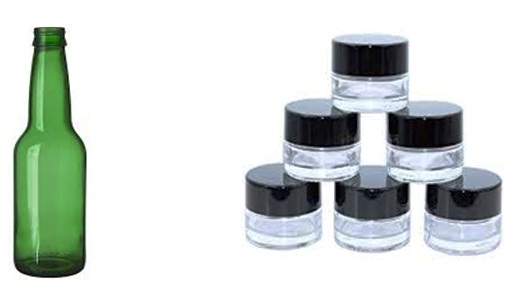
Aluminum is also a very common material used across the packaging industry. According to aluminum.org, “Aluminum foil is produced by rolling aluminum slabs cast from molten aluminum in a rolling mill to the desired thickness”. Most aluminum used for packaging comes from cans and containers. According to the Aluminum Association, “more than 7 billion foil cans and containers are produced annually”. Cans and containers are the main uses of aluminum in the packaging industry but there are many other ways aluminum can be used. Foil made from aluminum can be used as a protective wall or barrier to protect products from external elements like the sun, moisture, etc.
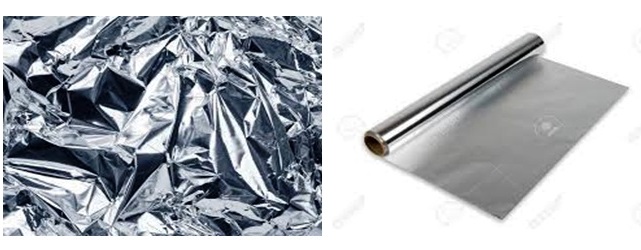
Kraft paper is another option that is extremely viable. Kraft paper is made using the Kraft process, which is the chemical conversion of wood into wood pulp. The wood pulp is then washed and left behind is paper. Unlike other traditional paper making processes, Kraft paper can use every type of wood including bamboo and pine which cannot be used for other paper. Kraft paper is superior to regular paper in the packaging market due to its strength compared to regular paper. Kraft paper has a reduced lignin content and high sulfur ratio which makes it much stronger. A popular use of Kraft paper is having it layered on top of wooden pallets so boxes have a layer underneath them to avoid product slipping. Kraft paper is mostly used today for giftwrapping and giving smaller items a minimal layer of protection.
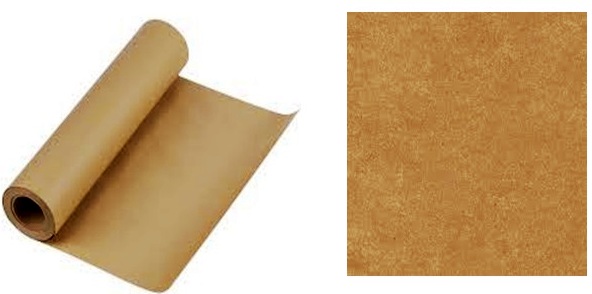
Corrugated fiberboard is one of the best ways to protect a package and ensure a consumer is satisfied. The protection is basically unmatched to many other things in the packaging market. Corrugated fiberboard is a packaging material formed by gluing a fluted corrugated sheet to one or two sheets of flat linerboard. Corrugated fiberboard is usually referred to as cardboard by the general public, although cardboard is a broader term that refers to any heavy paperboard, even if not corrugated. Corrugated fiberboard is a very commonly used material in the packaging industry if not the most used. There are many types of corrugated fiberboards for companies to choose from.
Corrugated fiberboard and cardboard are both made of paper-based materials, but are different from one another in many ways. Corrugated material is made up of an inside liner and outside liner that has fluting in between the two liners. Corrugated fiberboard/material is commonly used for shipping boxes, retail display, and retail packaging. On the other hand, cardboard is basically any type of board made from heavy paper-pulp stock that usually only consists of one layer.
- Single Face: One sheet of flat linerboard is glued to one piece of corrugated paperboard.
- Single Wall: One piece of corrugated paperboard is glued in between two sheets of flat linerboard.
- Double Wall: Three sheets of flat linerboard with two pieces of corrugated paperboard glued in between.
- Triple Wall: Four sheets of flat linerboard with three pieces of corrugated paperboard glued in between.

Packing peanuts are very commonly used in the packaging industry. It seems that every time you receive a package that there are hundreds of packing peanuts surrounding the product. These peanuts are used inside of packages because they are very effective in protecting the contents of the package and are relatively cheap to mass produce. Packing peanuts can also be made from biodegradable materials which can be beneficial for the environment.
Packing peanuts came around in the 60’s and took the place of newspaper. Prior to peanuts, newspaper was used in packages as protection and cushion for the contents. These packing peanuts took the packaging industry by storm with how convenient and useful they were. These peanuts are placed inside the package around the product as a layer of protection. The peanuts will not hold the package completely still in place, but the peanuts will do their job of absorbing shock and impact during vigorous conditions. Packing peanuts are made from polystyrene, which is an extremely light weight material being almost ninety-nine percent air.
Since they are so light, it barely adds any extra weight to the overall package which decreases the cost of shipping.
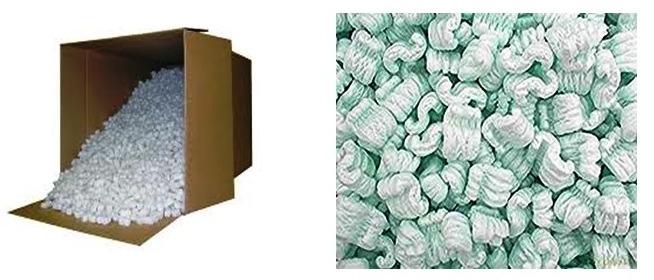
Throughout the packaging industry there are many different types of materials used by companies every single day. Each material has its advantages and disadvantages of being used and these companies take this into consideration before using the material. Choosing a type of material to use is a long and extensive process that involves research and lots of data. Choosing the wrong type of material can potentially damage a product, which leaves the consumer dissatisfied.
Packaging is one the largest growing industries in the world. New packaging materials are being brought to light frequently in today’s market and currently existing materials are always being improved. If a product is not properly packaged or packaged with the right material, consumers will receive their products with damage or in very poor condition. This will be viewed as a reflection of the company and will not leave a good impression on the company’s reputation. Not only does this leave a consumer angry with the company, but this can also become a safety issue.
References:
https://packagingblog.org/2017/03/27/5-of-the-most-common-packaging-materials-in-the-world/
https://www.packagingstrategies.com/articles/89084-increasing-use-of-glass-in-food-and-pharmaceutical-packaging-driving-market-growth
https://www.jampaper.com/blog/what-is-kraft-paper/
https://blog.bennettkc.com/what-is-corrugated-fiberboard
https://www.packagingstrategies.com/blogs/14-packaging-strategies-blog/post/89440-packaging-types-to-consider
https://www.aluminum.org/product-markets/foil-packaging
https://pakfactory.com/blog/future-of-packaging-technology-design-in-the-next-10-years-and-beyond/





























